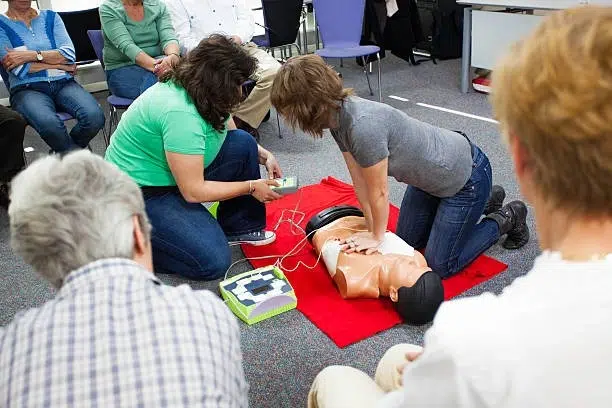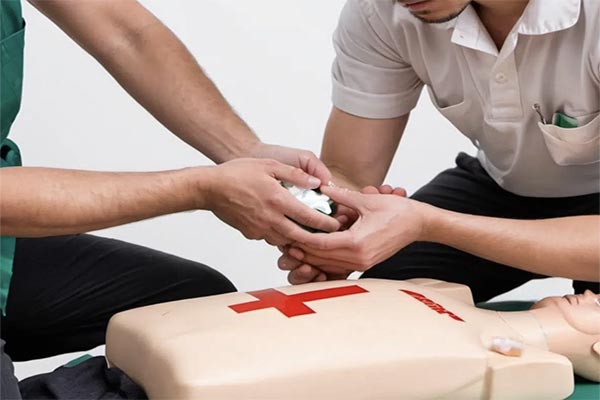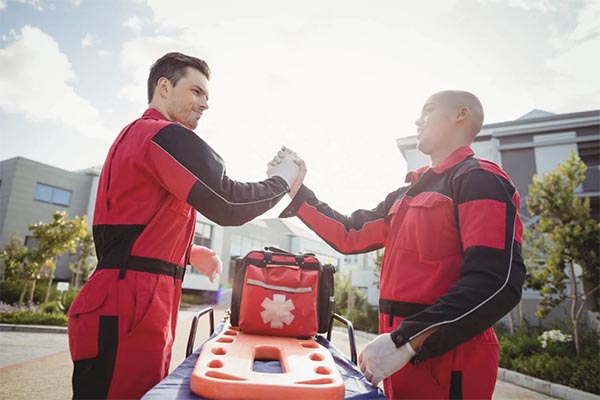
Every year, countless individuals find themselves in sudden cardiac emergencies, where immediate intervention can mean the difference between life and death. In these critical moments, possessing the skills and confidence to perform CPR (Cardiopulmonary Resuscitation) can be invaluable. CPR training not only equips individuals with the necessary techniques to save lives but also instills the confidence needed to act decisively in crisis situations.

CPR training is designed to teach individuals how to perform chest compressions and rescue breathing on someone who has stopped breathing or whose heart has stopped beating. This life-saving technique helps maintain vital blood flow to the brain and heart until emergency medical services arrive.
CPR training involves both theoretical and practical components. Participants learn about the anatomy and physiology of the heart and lungs, the signs of cardiac arrest, and the importance of early intervention. The practical component involves hands-on practice using manikins and other apparatus used in CPR training informally, allowing participants to simulate real-life scenarios and build muscle memory.
CPR certification typically lasts for two years. After this period, it is recommended to undergo refresher courses to ensure skills remain sharp and up-to-date. The American Heart Association and other organizations offer recertification courses to help individuals maintain their proficiency in CPR techniques.
One of the key benefits of CPR training is the confidence it instills in participants. Knowing that you have the skills to save a life can be empowering, reducing hesitation in emergency situations.
Many people hesitate to perform CPR because of fear or anxiety about doing it incorrectly. CPR training addresses these concerns by providing clear instructions and ample practice opportunities. Participants gain a better understanding of the procedure and what to expect, which helps alleviate fear and anxiety.
During CPR training, participants engage in scenario-based exercises that mimic real-life emergencies. These simulations provide a safe environment to practice skills and decision-making, helping participants feel more prepared to handle actual crises.
Competence in performing CPR is critical during emergencies. CPR training equips individuals with the necessary skills to act quickly and effectively.
Through repetitive practice, participants master the techniques required for effective CPR, including the correct hand placement, compression depth, and rescue breathing. The hands-on experience ensures that individuals are comfortable performing CPR when the need arises.

CPR training also familiarizes participants with various apparatus used in CPR, such as automated external defibrillators (AEDs) and pocket masks. Understanding how to use these tools enhances the effectiveness of CPR and increases the chances of a positive outcome.
The cost of CPR training can vary depending on the provider, location, and level of certification. Basic CPR courses are generally affordable, with prices ranging from $40 to $100. Some organizations offer discounts or free training for certain groups, such as students or healthcare professionals.
CPR training is not only beneficial for individuals but also for the community as a whole. Widespread CPR knowledge increases the likelihood of timely intervention in cardiac emergencies, improving survival rates.
Communities can benefit from organizing CPR training sessions at schools, workplaces, and local events. Encouraging as many people as possible to become certified in CPR creates a network of potential lifesavers within the community.
CPR courses are available for various audiences, including laypersons, healthcare professionals, and first responders. Tailoring training to the needs of each group ensures that everyone, regardless of their background, is equipped to handle emergencies effectively.
CPR training is a crucial skill that builds confidence and competence in crisis situations. By learning and practicing CPR techniques, individuals can overcome fear and anxiety, respond effectively to emergencies, and potentially save lives. As communities embrace CPR training, they create a safer environment for everyone.
The benefits of CPR training extend beyond the individual, fostering a culture of preparedness and support within the community. Whether you’re learning CPR for the first time or seeking recertification, the skills gained through training are invaluable in moments of crisis.
Investing time in CPR training is a small commitment that can have a significant impact, equipping you with the knowledge and confidence to make a difference when it matters most.
Don’t wait for an emergency to strike—equip yourself with the skills needed to make a difference. At CPR Classes Near Me, we offer comprehensive CPR certification courses designed to prepare you for real-life situations. Join us to learn life-saving techniques, boost your confidence, and contribute to the safety of your community. Expand your abilities and be ready to step up when the moment calls for it. Sign up for a CPR class today and take the first step towards becoming a certified lifesaver. Visit CPR Classes Near Me to find a course that fits your schedule and take part in this empowering experience. Your training could one day be the difference between life and death.
Our primary goal is to ensure that you receive a top-quality CPR/First Aid certification. With our in-person training in Austin, you can learn CPR and BLS in just one class. Your presence is all that’s needed to continue with your lesson! During your session, you will complete all the live-training components necessary to ensure you receive your AHA Healthcare Provider certification card.
Our CPR Classes in Austin are discounted to $59.95 (saving you $20), and our CPR + First Aid Class is offered at $79.95 (also saving you $20). When looking for CPR Classes, ensure to check for the American Heart Association seal. Other sites might seem cheaper but frequently lack the official training credentials demanded by employers.
Upon successful completion of the course, you will obtain a CPR certification that is valid for two years. The AHA CPR certification is recognized with the highest acceptance rate among employers nationwide.
Indeed! Enroll in any CPR Certification Austin BLS course to extend your certification for an additional two years. The in-person BLS course and the Renewal Class are identical.
Anyone capable of completing the course independently should consider pursuing CPR training and CPR Certification. There is no minimum age restriction for obtaining a CPR certification in Austin through the American Heart Association (AHA)..
CPR training needs to be carried out in person to guarantee its effectiveness. Our experienced instructors offer an engaging and dynamic learning experience. Typically, employers do not recognize CPR certifications that are obtained solely through online courses.
All authorized American Heart Association training centers are obligated to display the entire video. After a three-hour session with CPR Classes Near Me Austin, your BLS CPR eCard will be promptly issued by the instructor on the same day!